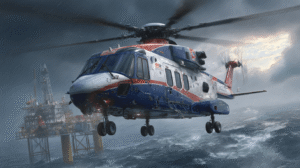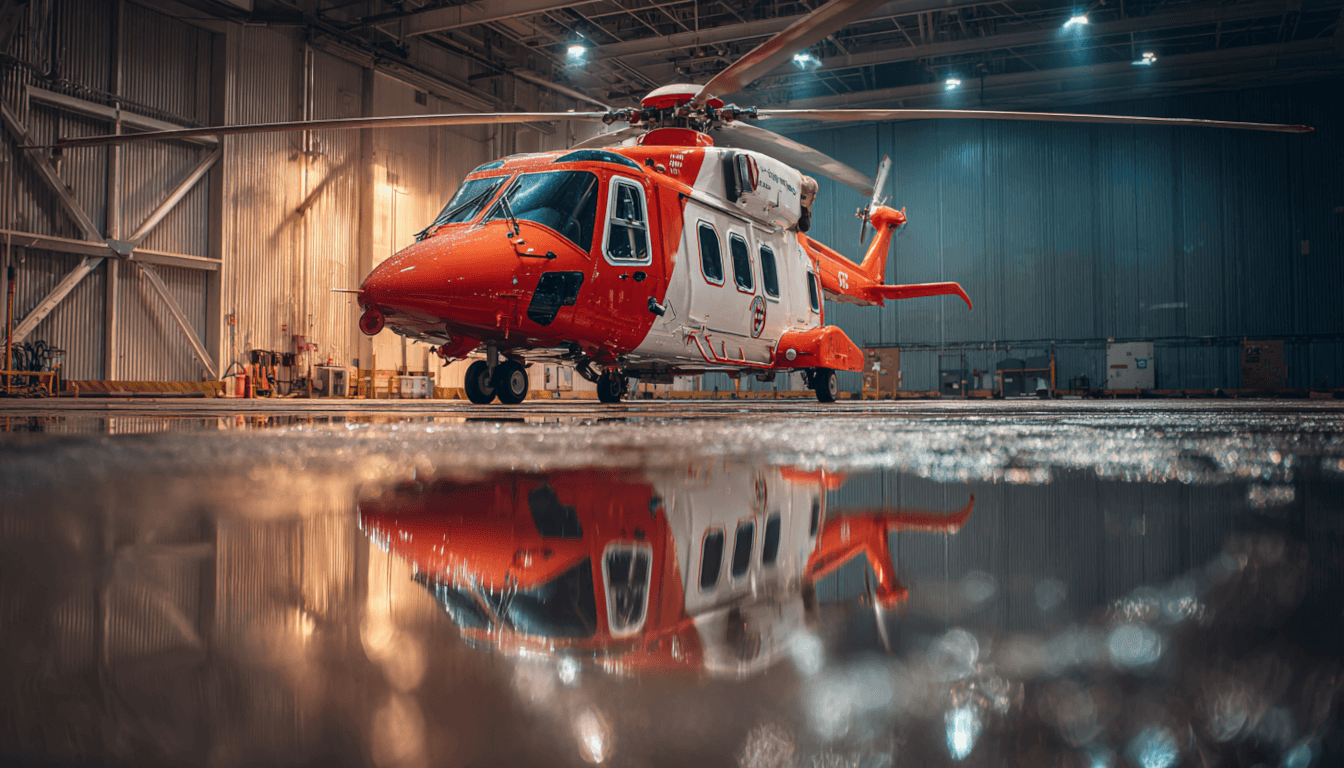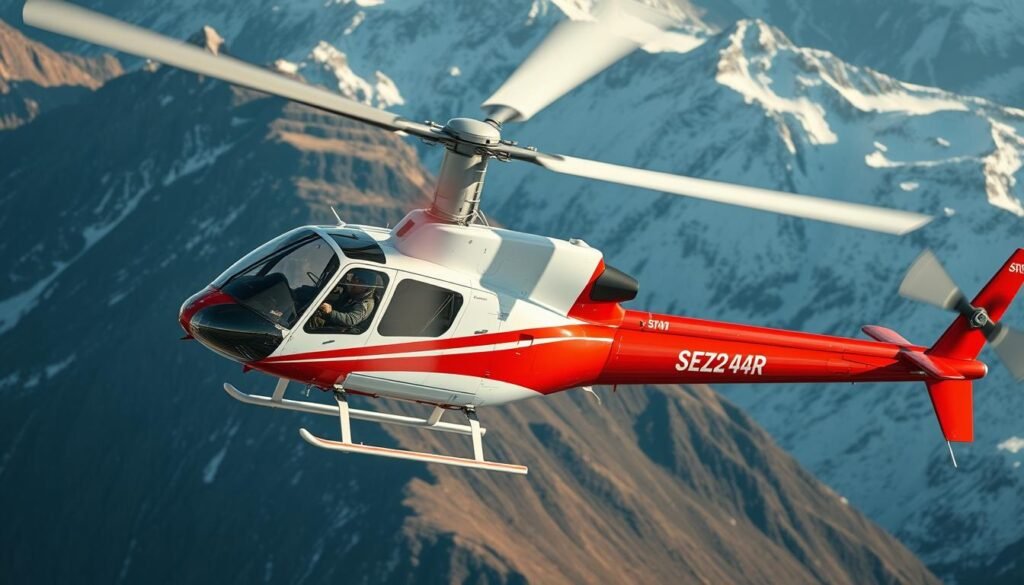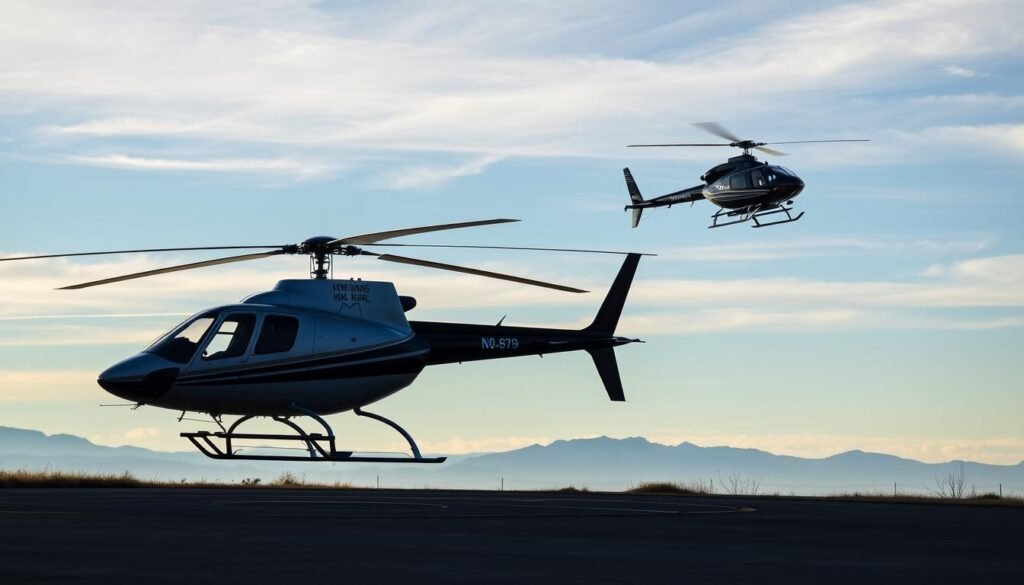This Industry Report examines how the operator structures pay across offshore oil-and-gas transport, charter missions, and EMS roles for U.S. readers.
The analysis shows what drives each compensation band and how candidates and current employees can benchmark earnings by role, contract type, base assignment, and utilization. It synthesizes reported negotiation outcomes, public contract milestones, and stated employment policies to map pay trends without speculation.
Role distinctions matter: offshore captain, charter captain, and EMS crew positions carry different responsibilities, certifications, and flight profiles that shape pay. Key drivers include contract cycles, client mix, mission risk, scheduling intensity, and services portfolio alignment.
Readers will get a data-driven view that prioritizes U.S. relevance while noting international signals. The report also highlights how leadership decisions, management focus, and demand cycles can shift earning tiers and how equal employment standards apply across comparable positions. For a full breakdown of helicopter pilot roles across sectors, see our Helicopter Pilot Pay Guide.
For related market ranges and certification impacts, see industry pay benchmarks and career-stage expectations in this pay insights report and this career-stage guide.
Key Takeaways
- Scope covers offshore transport, charter missions, and EMS pay structures for the U.S. market.
- Benchmarks help candidates and employees assess pay by role, contract, and base.
- Data combines reported negotiations, contracts, and company policies—no unsupported claims.
- Certifications, mission risk, and schedule intensity are primary drivers of compensation.
- Leadership, management focus, and fair employment standards influence long-term pay trends.
Industry Overview And Market Forces Shaping Bristow Pilot Salaries
Demand from oil-and-gas transport and government rescue services now plays a central role in setting pay bands for operations staff. Commodity cycles and public funding create peaks and troughs that affect hiring, utilization, and overall compensation. To compare hourly, monthly, and annual pay formats across roles, visit Helicopter Pilot Salary Per Hour, Month, and Year.
Present Market Context: Oil And Gas, Search And Rescue, And U.S. Operations
Offshore work and long-term rescue contracts anchor much of the firm’s revenue. That visibility supports planning for training, recruitment, and competitive pay so employees remain available during busy windows.
Multi‑Year Pay Deal And Industrial Action: What Recent Negotiations Signal About Salaries
Extensive industrial action and a subsequent multi-year agreement signaled stronger bargaining power for crews. The package included roughly an 11% base uplift plus a one-off 6% payment tied to 2023 pay, which can reset baselines across roles.
Equal Opportunity And Hiring Practices: How EEO Standards Inform Employment And Compensation
The company’s formal EEO commitment frames recruitment and promotion to prevent discrimination across protected characteristics. Clear employment policies help management apply consistent pay decisions and reduce turnover risk.
- Market demand and contract timelines drive staffing and pay.
- The recent deal after lengthy action indicates upward pressure on compensation.
- Large programs and renewals often prompt staffing ramps and pay adjustments.
For current offshore pilot openings and employer expectations, visit Bristow Group’s careers page.
Bristow Helicopter Pilot Salary: Offshore, Oil Rig Transport, And Charter Roles
What drives pay in offshore roles are contract values, utilization levels, and the technical demands of overwater operations. Those elements shape base pay, allowances, and overtime structures for crew in energy and transport services.
Offshore And Oil Rig Transport Pilot Earnings: Compensation Drivers And Contract Cycles
Contract cycles with major energy clients often trigger wage reviews and adjustments when flight hours or risk rise. High-utilization routes and complex logistics usually result in stronger salary packages. For licensing and offshore flight qualifications, see the FAA’s pilot certification guide.
“Extensive industrial action” preceded a multi-year deal that included an indicated 11% uplift plus a one-off 6% payment tied to 2023 pay.
Type ratings for medium/heavy rotorcraft, instrument proficiency over water, and client audits also affect bonuses and allowances. Standby duty, weather contingencies, and long overwater segments are priced into compensation to reflect mission risk.
For provider-specific benchmarks, explore Air Methods Helicopter Pilot Salary and US Coast Guard Helicopter Pilot Salary.

Charter Helicopter Pilot Salary: Client Mix, Utilization, And Seasonal Demand
Charter pay depends on client mix—energy, corporate, tourism, or utility work—where utilization, routing, and seasonality change monthly income potential.
- Revenue per flight hour and on‑demand availability drive premium pay.
- Retention programs often include training pathways and clear progression to higher‑responsibility positions.
- International examples show rotary‑wing roles typically command higher earnings than fixed‑wing counterparts, reflecting mission complexity.
Employees should weigh base pay against duty schedules, per diem, travel logistics, and costs to maintain type ratings when evaluating offers. For broader market context, see this pay insights report.
EMS Pilot Compensation And Sector Variations Across Bristow Operations
Emergency medical service crews typically see pay tied to readiness, mission complexity, and round‑the‑clock coverage obligations. Compare offshore and charter pay to EMS & Medevac, Corporate & Offshore, and Instructor roles.
Rotary‑wing roles often attract a premium because vertical lift enables access to confined scenes and reduces patient transfer time. That capability raises training demands and procedural currency, which employers reward. For real-time salary benchmarks, visit Salary.com’s helicopter pilot data.

EMS Pay In Context: Rotary‑Wing Premiums Versus Fixed‑Wing Benchmarks
Regional reporting from Nigeria shows rotary‑wing crews among higher earners, with annual figures near N56 million (~$155,550). While not U.S. specific, this supports the broader point that vertical lift roles often pay more than fixed‑wing equivalents.
- Mission urgency: 24/7 coverage and rapid dispatch increase compensation differentials.
- Skills premium: NVG, instrument currency, and clinical integration raise total rewards.
- Program metrics: Readiness allowances and protocol adherence often factor into pay packages.
| Role Type | Primary Drivers | Typical Premiums | Implication For Employees |
|---|---|---|---|
| Rotary‑Wing EMS | Rapid access, NVG, clinical crew | Higher base + readiness allowances | Higher total pay; more training required |
| Fixed‑Wing EMS | Long range, runway access, fewer landings | Lower base; fewer urgency differentials | Stable schedules; lower proficiency load |
| Off‑Base Contractors | Contract terms, insurer requirements | Varies by operator and client | Compare benefits, training, and leadership support |
Operators balance safety and hiring needs by tying compensation to measurable performance and program metrics. Prospective hires should weigh base pay against benefits, training reimbursement, and schedule predictability when evaluating offers in aviation operations. For offshore aviation trends and safety updates, visit Vertical Aviation International.
Final Thoughts
The bottom line: earnings reflect the mix of client contracts, flight utilization, and the technical lift required for each role.
Contract-driven offshore work and charter business shape core pay bands, while EMS roles add readiness and mission-driven premiums. The multi‑year deal after May 2024’s industrial action, with an indicated 11% uplift and a one‑off 6% payment, points to durable pay momentum employees can factor into career plans.
Leadership and management must balance safety, hiring, and training to sustain competitive salary offers and fair employment practices. Read more on pay parity in the operator’s context via this pay parity note and for broader market ranges see this pay insights report.
Whether you’re flying executives, supporting offshore rigs, or transitioning into turbine roles, understanding how employer type, location, and career stage shape pay is key. For a full salary roadmap, revisit our Helicopter Pilot Pay Guide.



